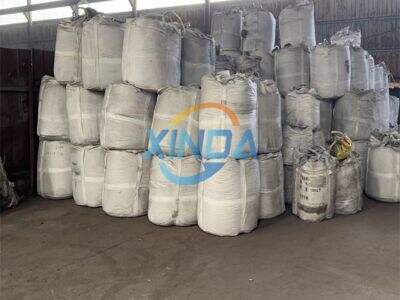Silicon slag is a by-product of the production of silicon metal. It is a key product, as it is extensively used in two of the biggest industries — construction and steel-making. It is very important to measure the performance of silicon slag. The degree of purity gives us an idea of the quality of the silicon slag, which determines the use of the product. So in Japan and Korea, some of the major parameters that we check for the Xinda silicon slag performance are these factors involving what types of materials are in it, the size of the pieces and its reaction to magnets.
What’s Inside Silicon Slag?
Silicon slag "chemical composition" is a certain element content contained in silicon slag. Silicon, iron, aluminum, calcium and some other significant components made in these. When we know the composition of silicon slag we can determine its fitness for use. The next thing we look at is “size distribution.” This, tells us, the size of pieces of silicon slag. This is really important because different applications or uses have different levels of efficiency for silicon slag depending on the size of the pieces.
The other key is magnetic susceptibility. This described how silicon slag responds when close to a magnet. Some process that makes use of magnets to collect and remove materials on the basis of their magnetic properties.
Comparing Japan and Korea
Japan and Korea both play a very important role in the silicon slag industry. And both are deeply intertwined with the manufacture and use of silicon slag. Silicon slag is primarily used for the production of steel in Japan. Whereas in Korea, this is mainly used in building and construction. Although Japan and Korea use Xinda Silicon Slag Lump for different applications, both countries consider similar key characteristics to evaluate the silicon slag quality and performance.
The emphasis on the refinement of silicon slag chemical composition strongly in Japan. Japanese firms are trying to ensure that silicon slag is usable in the steel industry. Xinda is one example of a company doing this. Their constant commitment to innovating new processes and technology for silicon slag quality resulted in their being world leaders in the industry today. In Korea, on the other hand, this tends to be about optimizing the extents of the pieces of silicon slag. This allows the silicon in slag to work more in industries related to construction.
Lessons from Japan and Korea
The Japanese and Koreans are decades ahead of everyone else when it comes to processes of continuous improvement. Corporate in all two countries are constantly discovering new methods to enhance the top and usefulness of silicon chunk. Continuously working hard to improve themselves significantly contributes to their competitiveness in the international market, which is vital to their survival.
Another lesson to be learnt is that silicon slag need to be customized for use in specific applications. Japan, in particular, produces silicon slag only for steel. On the other hand, in Korea, they customize it for the building industry. This allows silicon slag to be channeled for the best application across industries.
Trends and Challenges
Firstly, there is a phenomenon of expansion of demand for high-quality silicon slag in the Japan-Korean silicon slag industry at present. The silicon slag compound is expected to witness an increase in demand with the consolidating construction and steel-making industries. Besides, the increasing demand creates a great opportunity for foreign companies, such as Xinda to make more business and find a better quality for their silicon slag.
As there is a possible impact, there are some problems in silicon slag industry as well. The biggest challenge is how environmentally damaging it is to create and destroy silicon slag. If silicon slag is not disposed of properly, it can lead heavy metals that can harm the ecosystem. For this reason, Japanese and Korean companies are working to promote new environmentally sound disposal methods for silicon slag.
Silicon slag is the by-product of silicon metal production and can be used for a variety of applications including in the metallurgical and construction industries.
Disposal of silicon slag is a major concern in Japan and Korea. Heavy metals such as iron, aluminum, and calcium are found in silicon slag. Other toxic materials can damage the environment if proper care is not taken. To address this problem, Japanese and Korean companies are striving to develop new technologies for the disposal of silicon slag in a growth way.
Silicon slag/recycled silicon end products are one potential solution being investigated as a natural sand replacement in cement-based construction materials. Thus, this method contributes to both reusing silicon slag and limiting natural sand. Xinda Silicon Slag Powder can replace natural sand, which is a scarce resource, in a certain percentage.
Finally, the silicon slag industry in Japan and Korea is dynamic and evolving. This is the beginning of a new silicon application evolution, and professional industrial silicon spray equipment companies, such as Xinda, are developing new processing techniques and technologies to ensure that the quality and performance of silicon slag will be increasingly utilized in new applications. Despite the obstacles around production and disposal, which is a key area of criticism for this idea, Japanese and Korean business are leading in finding smart and innovative solutions to such issues.
 EN
EN
 AR
AR
 NL
NL
 FR
FR
 DE
DE
 HI
HI
 IT
IT
 JA
JA
 KO
KO
 PT
PT
 RU
RU
 ES
ES
 TL
TL
 ID
ID
 SR
SR
 UK
UK
 VI
VI
 TH
TH
 TR
TR
 FA
FA
 MS
MS
 BE
BE
 AZ
AZ
 UR
UR
 BN
BN
 GU
GU
 JW
JW
 KM
KM
 LO
LO
 LA
LA
 NE
NE
 PA
PA
 TA
TA
 TE
TE
 MY
MY
 UZ
UZ
 KU
KU
 KY
KY
 LB
LB
 SD
SD






